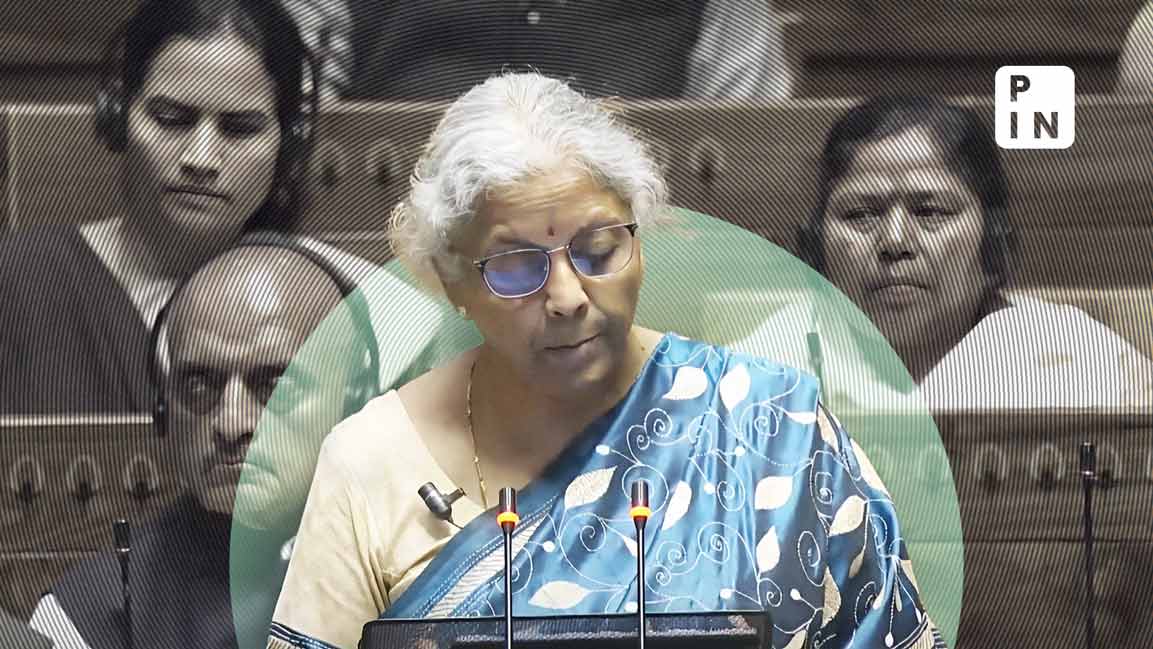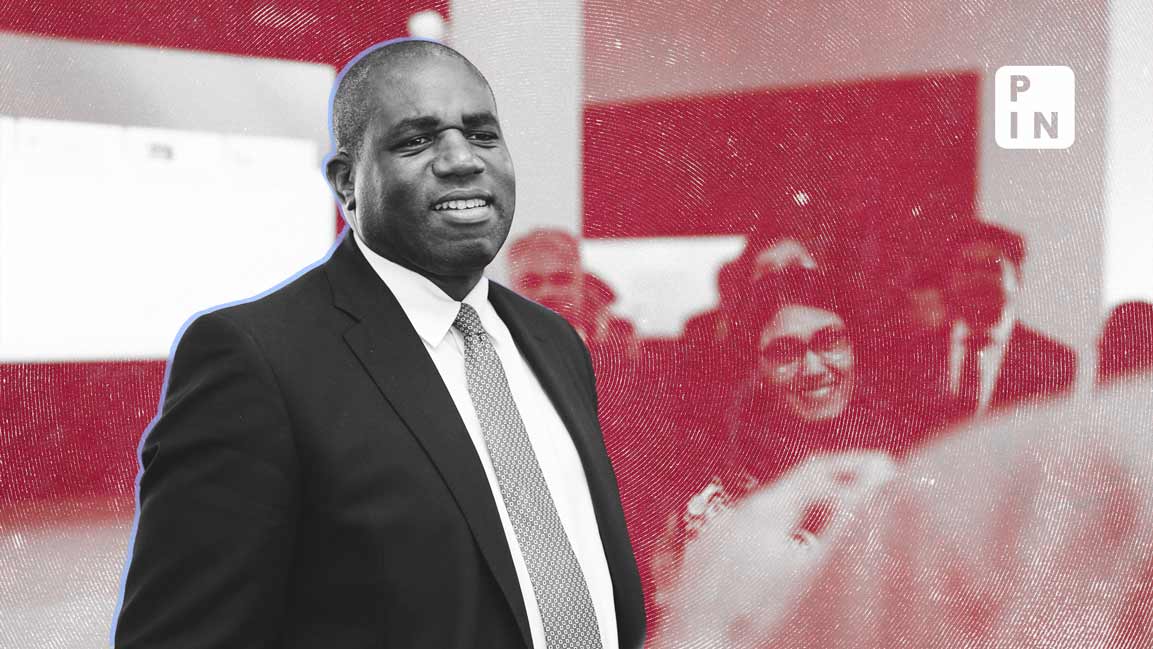- | 2:21 pm
Interim budget: FM trims borrowing, hikes spending, maintains tax rates
Govt sets borrowing target of $170 billion for FY25, lower than that for current fiscal, in anticipation of higher foreign inflows following its inclusion in global bond market indices

India on Thursday set its budget deficit target for the coming fiscal at 5.1% of gross domestic product (GDP), lower than the revised estimate of 5.8% of GDP in the current fiscal, while trimming borrowings.
The government aims to borrow ₹14.13 trillion (about $170 billion) in the next fiscal year, lower than the ₹15.4 trillion in the current fiscal, finance minister Nirmala Sitharaman said while presenting the government’s interim budget ahead of the general election.
Sitharaman also announced an 11.1% increase in capital spending from the previous year to ₹11.11 trillion, or 3.4% of the gross domestic product (GDP).
Bonds rallied on the government’s lower bond sales program, which comes as the country gears up for a surge in foreign fund inflows in the wake of the inclusion of government bonds in global indices later this year.
JPMorgan Chase and Co. said in September that it would include Indian government bonds to its benchmark emerging-market index, with analysts expecting India’s inclusion in the index to generate foreign portfolio inflows of $30 billion spread over 10 months, starting June. Stocks were largely unchanged, with the benchmark Sensex ending the day 0.15% down at 71,645.30.
No change in taxation
The government did not make any changes to taxation and proposed to retain the rates for direct taxes and indirect taxes, including import duties.
Incidentally, the government had slashed import duty on mobile phone components from 15% to 10% on Wednesday, a day before the interim budget, while earlier last month it had raised the import duty on gold and silver ‘findings’ such as pins, clamps, screws and hooks to align with other forms of the precious metals.
The finance minister announced extensions on tax incentives currently benefiting startups and investments made by sovereign wealth or pension funds. Tax exemptions on specific incomes of some IFSC units, all set to expire on 31 March this year, will continue until 31 March 2025, the minister said, adding that the extension aims to maintain a consistent taxation environment and support ongoing economic activities.
Sitharaman also proposed to cancel all pending tax demands of up to ₹25,000 that date back to fiscal year 1962, extending through to 2010, and up to ₹10,000 for fiscals 2010-11 to 2014-15. This proposal is expected to benefit about 10 million taxpayers, she said.
Rail corridors in the works
The government has outlined three key railway corridor programs under the PM Gati Shakti initiative – energy, mineral, and cement corridors; port connectivity corridors; and high traffic density corridors, aimed at enhancing multi-modal connectivity, improving logistics efficiency, and reducing costs.
The decongestion of high-traffic corridors will not only enhance passenger train operations, ensuring safety and faster travel, but in combination with dedicated freight corridors and the three economic corridor programs, it will also boost GDP growth and lower logistic costs, Sitharaman said.
About 40,000 standard rail bogies will be upgraded to Vande Bharat standards, significantly improving safety, convenience, and comfort for passengers, she added.
Widening GST base
The government said the goods and services tax (GST) base has more than doubled, with the average monthly gross GST collection almost doubling to ₹1.66 trillion.
On Wednesday, finance ministry data showed the central and state governments collected ₹1.72 trillion in January, the second highest figure ever since the indirect tax was rolled out about six years ago.
Aviation taking off
Over the past decade, the aviation sector has taken off, with the number of airports doubling to 149 and the UDAN scheme significantly expanding air connectivity to tier-II and tier-II cities, adding 517 new routes and serving 1.3 million passengers. Indian carriers have also placed orders for over 1,000 new aircraft, and the expansion and development of airports are set to continue at a rapid pace, Sitharaman said.
Faster global trade
Sitharaman said improvements made in the customs process to support international trade have led to a significant reduction in the time taken to release imports over the past four years, since 2019, when the National Time Release Studies began.
At inland container depots, where goods are transported primarily by land, Sitharaman said the release time has reduced by 47%, taking an average of 71 hours.
At air cargo complexes, the time has decreased by 28%, with the average release time now being 44 hours, Sitharaman said, while adding that at sea ports, there’s been a 27% reduction, leading to an average release time of 85 hours.
Greening the economy
The government will provide viability gap funding for harnessing the offshore wind energy potential with an initial capacity of 1 gigawatt and aims to establish a coal gasification and liquefaction capacity of 100 mt by 2030, reducing imports of natural gas, methanol, and ammonia, Sitharaman said.
A phased mandatory blending of compressed biogas in CNG for transport and PNG for domestic use will be mandated, with financial assistance provided for the procurement of biomass aggregation machinery to support collection, she added.
Charging up the EV ecosystem
The government will enhance the electric vehicle ecosystem by supporting the manufacturing of e-vehicles and the development of charging infrastructure, and by promoting the use of e-buses in public transport through a payment security mechanism.
The government is also planning to launch a new bio-manufacturing and bio-foundry scheme, offering eco-friendly alternatives such as biodegradable polymers, bio-plastics, bio-pharmaceuticals, and bio-agri-inputs, thereby shifting the current consumptive manufacturing model to one based on regenerative principles, the finance minister said.
Boosting tourism potential
The hosting of G20 meetings across 60 locations showcased India’s diversity and bolstered its appeal as a prime destination for business and conference tourism, also tapping into the growing travel aspirations of the middle class and the vast potential in tourism, including spiritual tourism, for local entrepreneurship, Sitharaman said.
The government will next support states in the comprehensive development of iconic tourist centers, enhancing their global branding and marketing. It will establish a quality rating framework for these centers, offering long-term interest-free loans for their development, in addition to boosting domestic tourism through projects in areas including Lakshadweep, thereby also creating job opportunities, she added.
‘FDI’ as First Develop India
Giving a report card of the Narendra Modi-led government between 2014 and 2023, Sitharaman said foreign direct investment inflows reached $596 billion, doubling the amount from 2005 to 2014. To sustain foreign investment, India is negotiating bilateral investment treaties under the ‘first develop India’ approach, she added.













